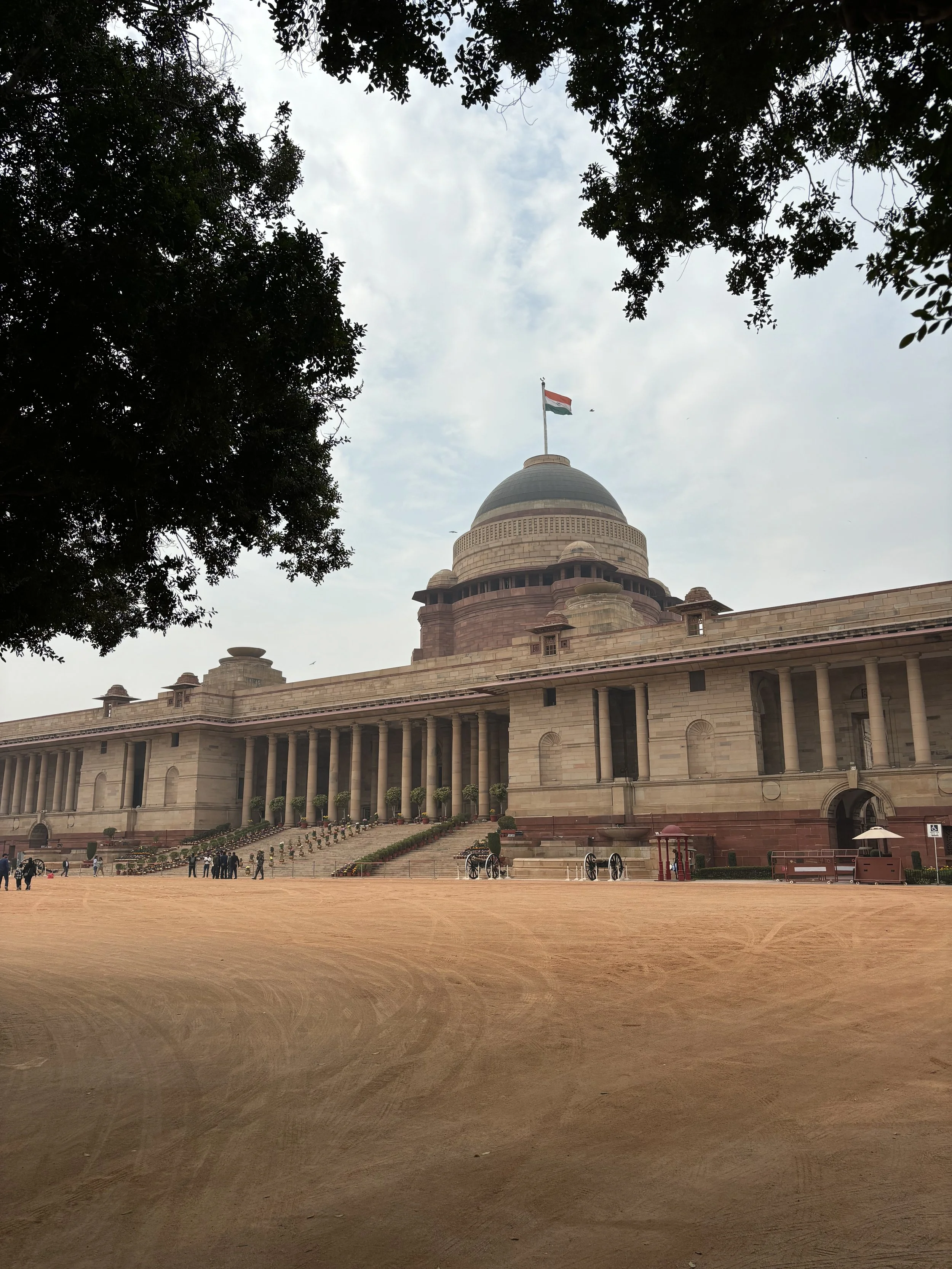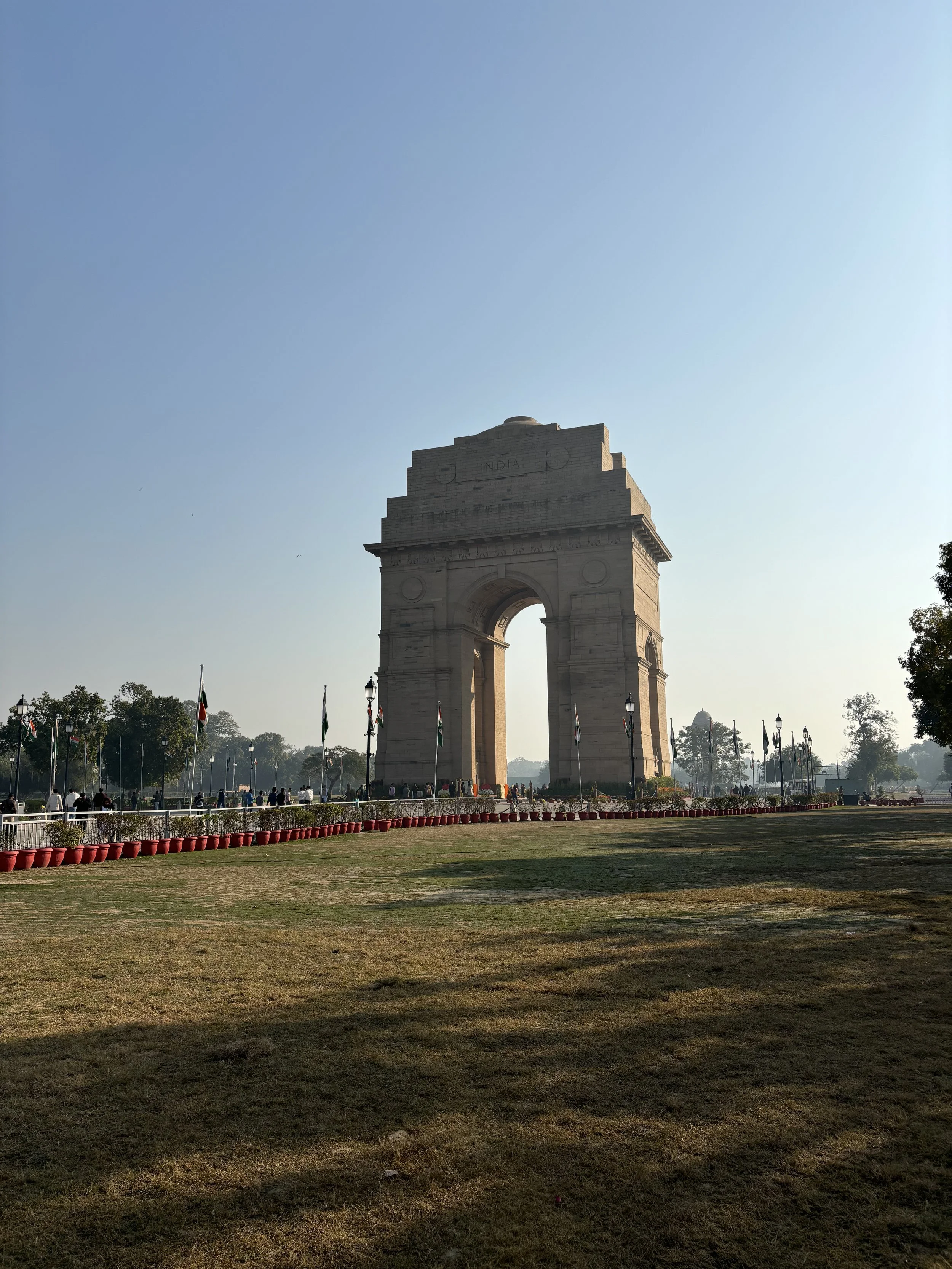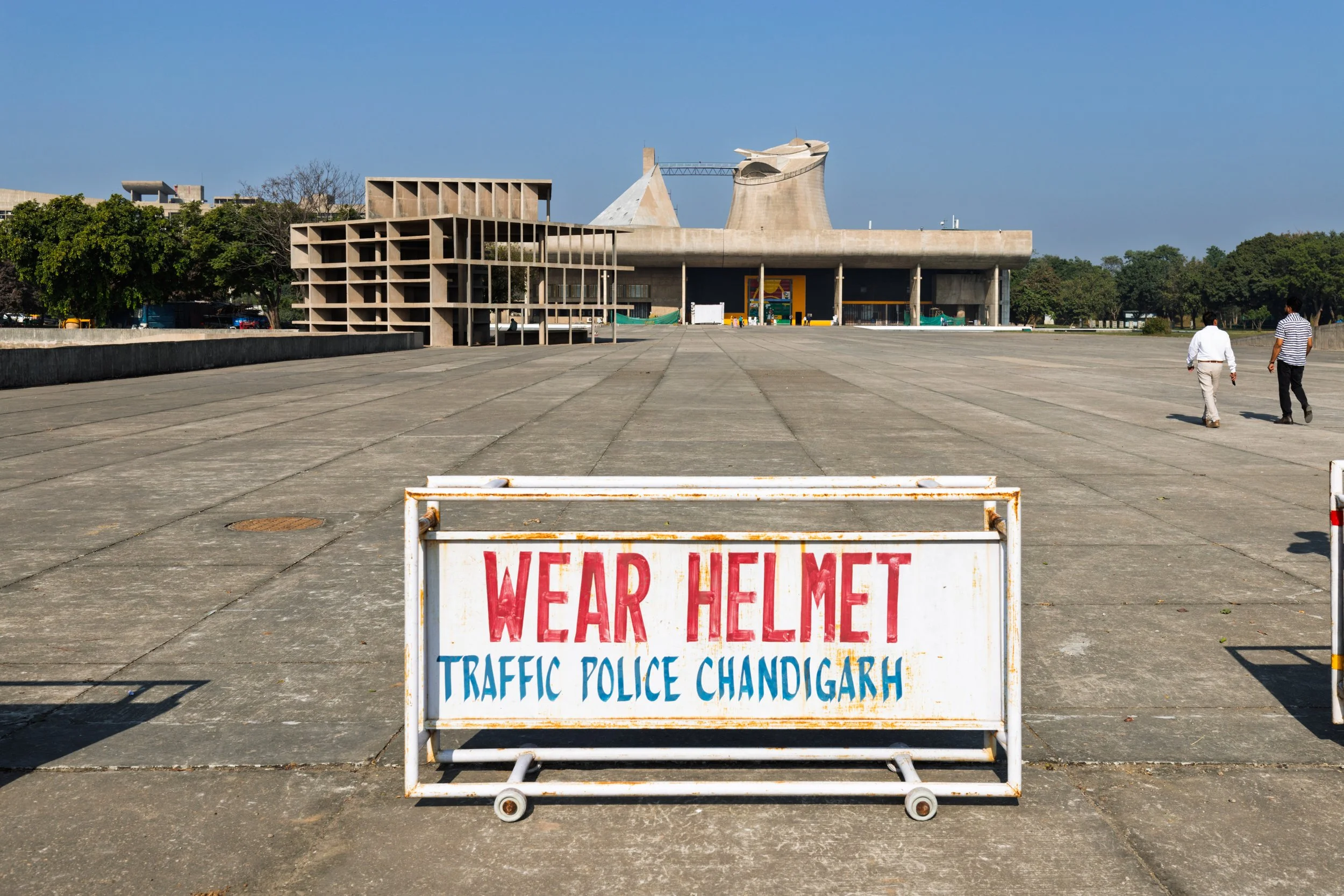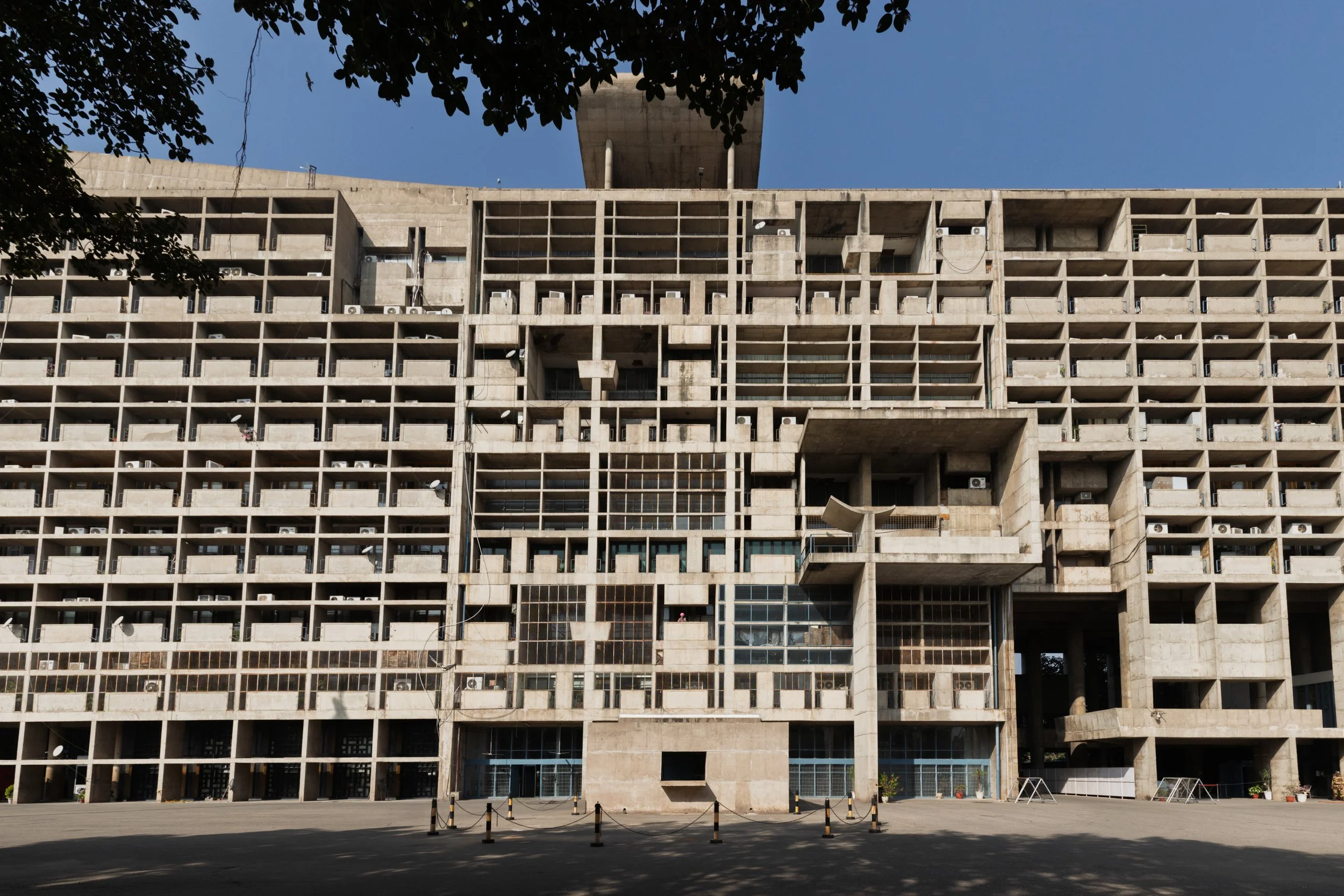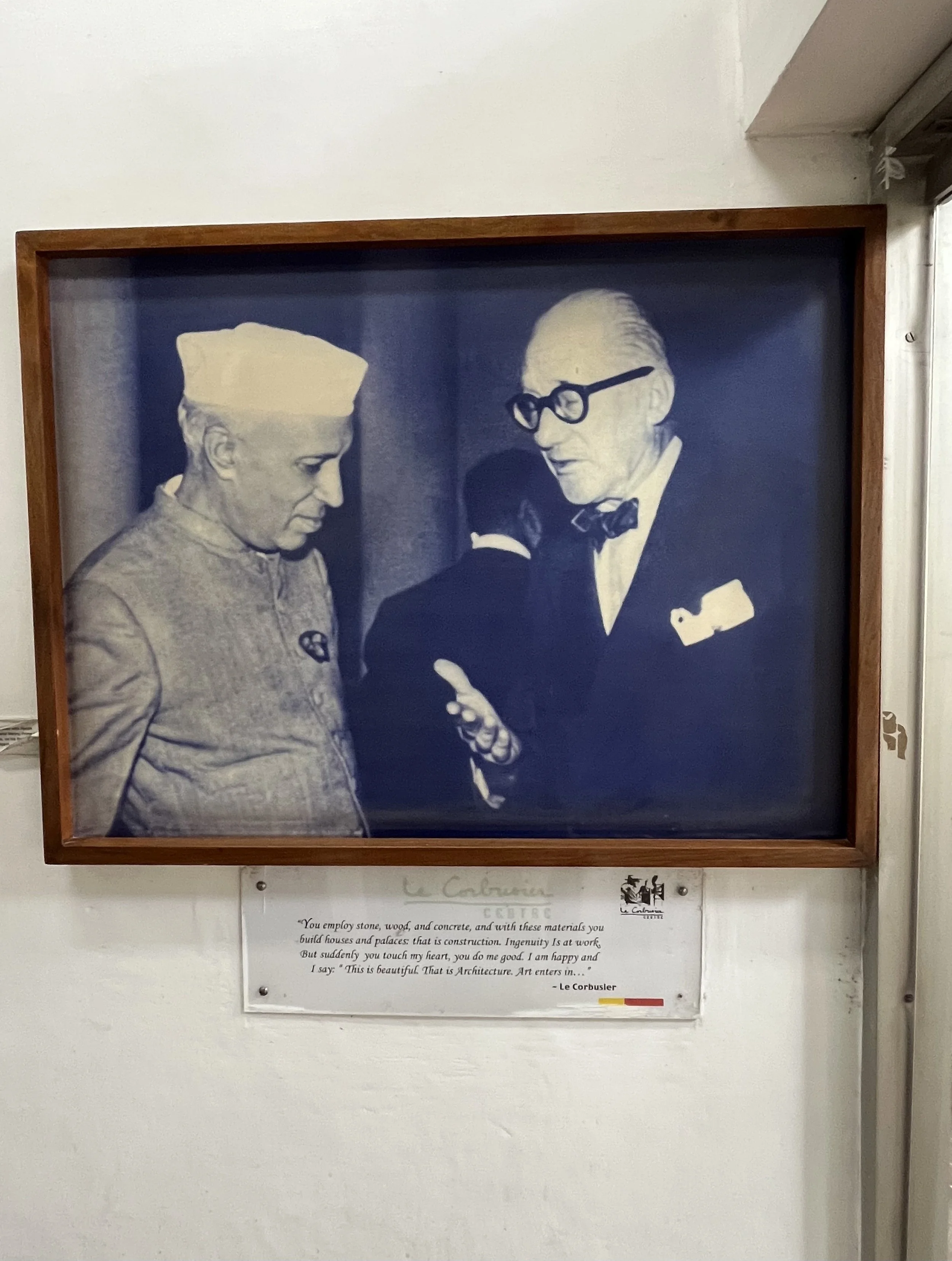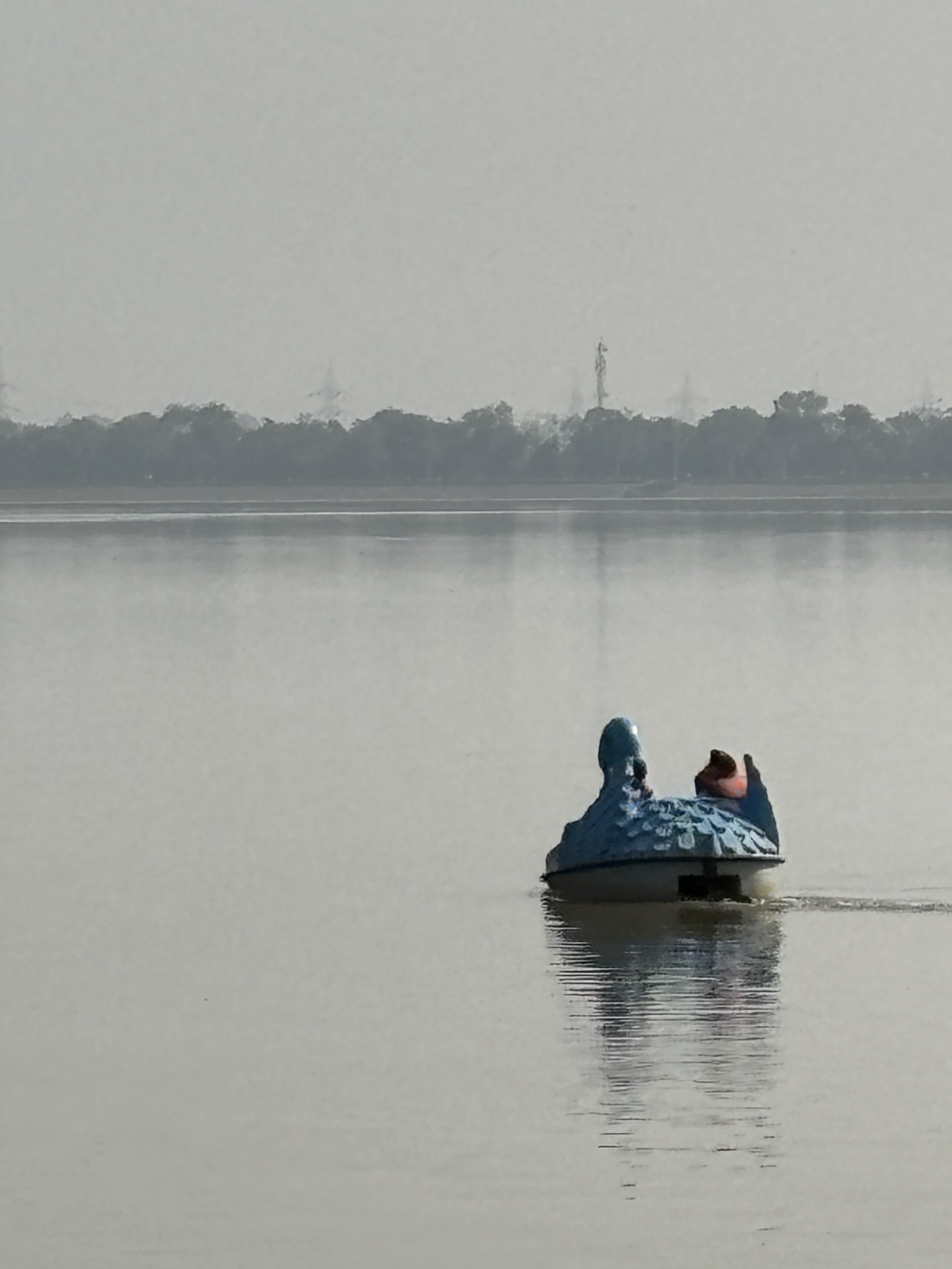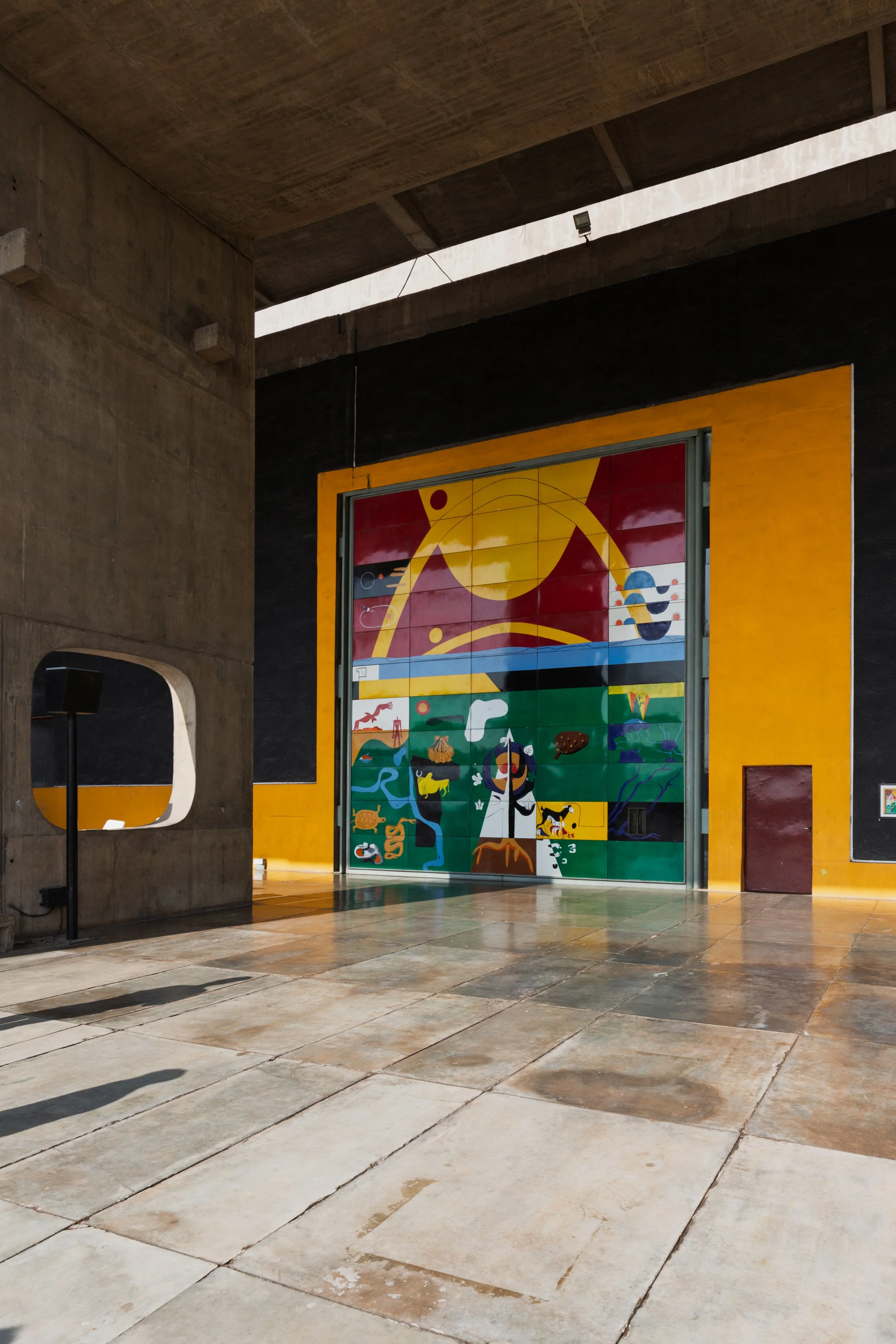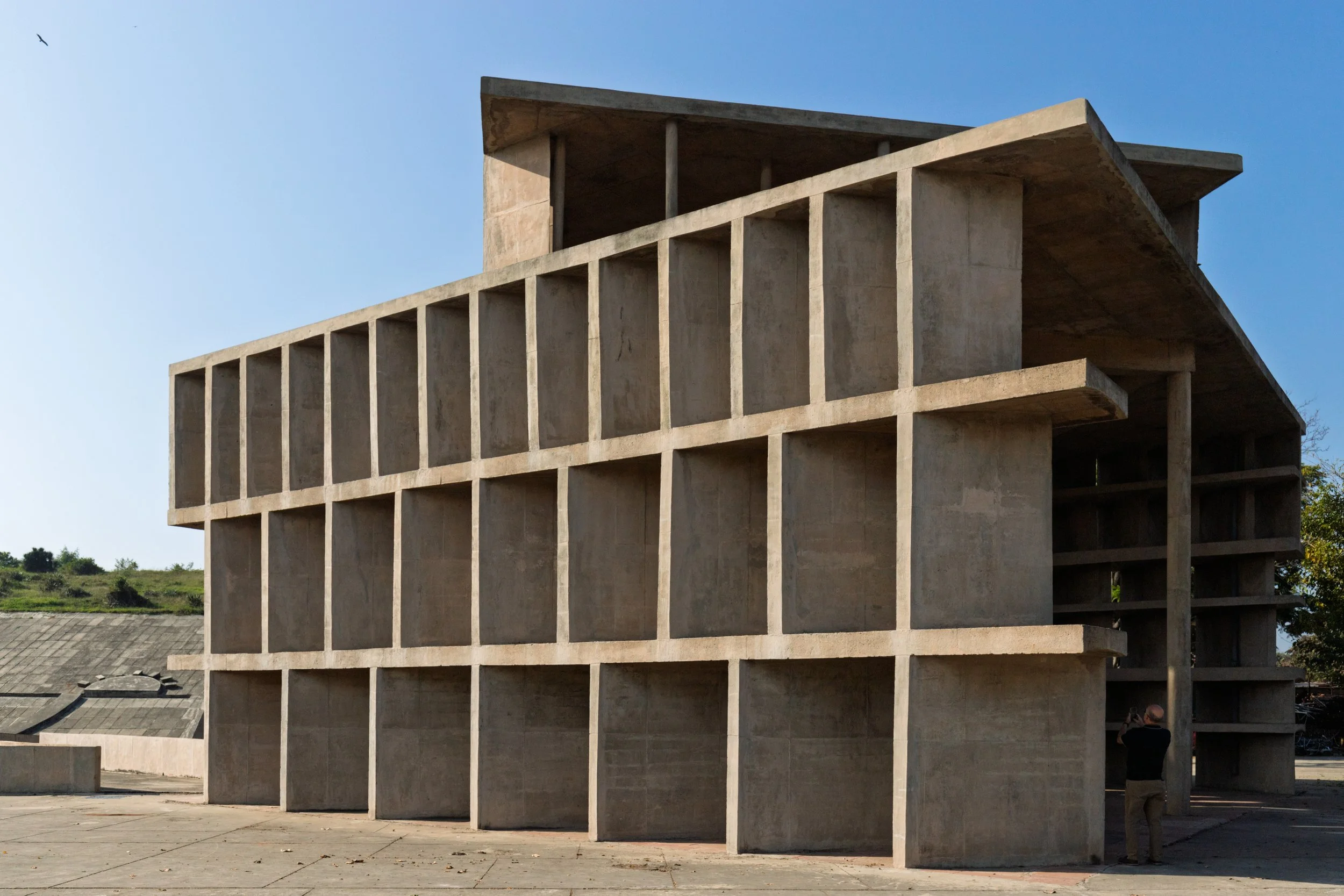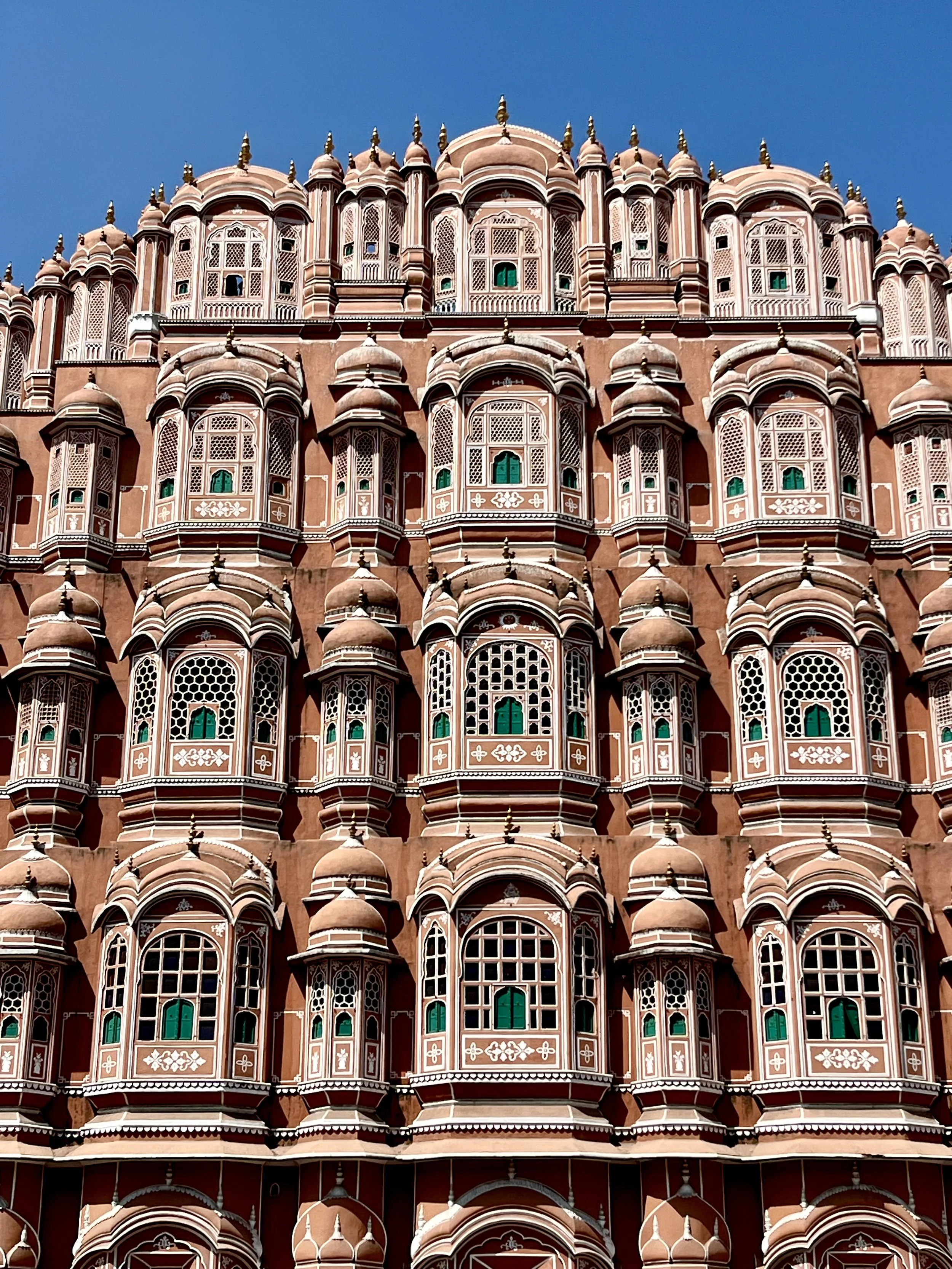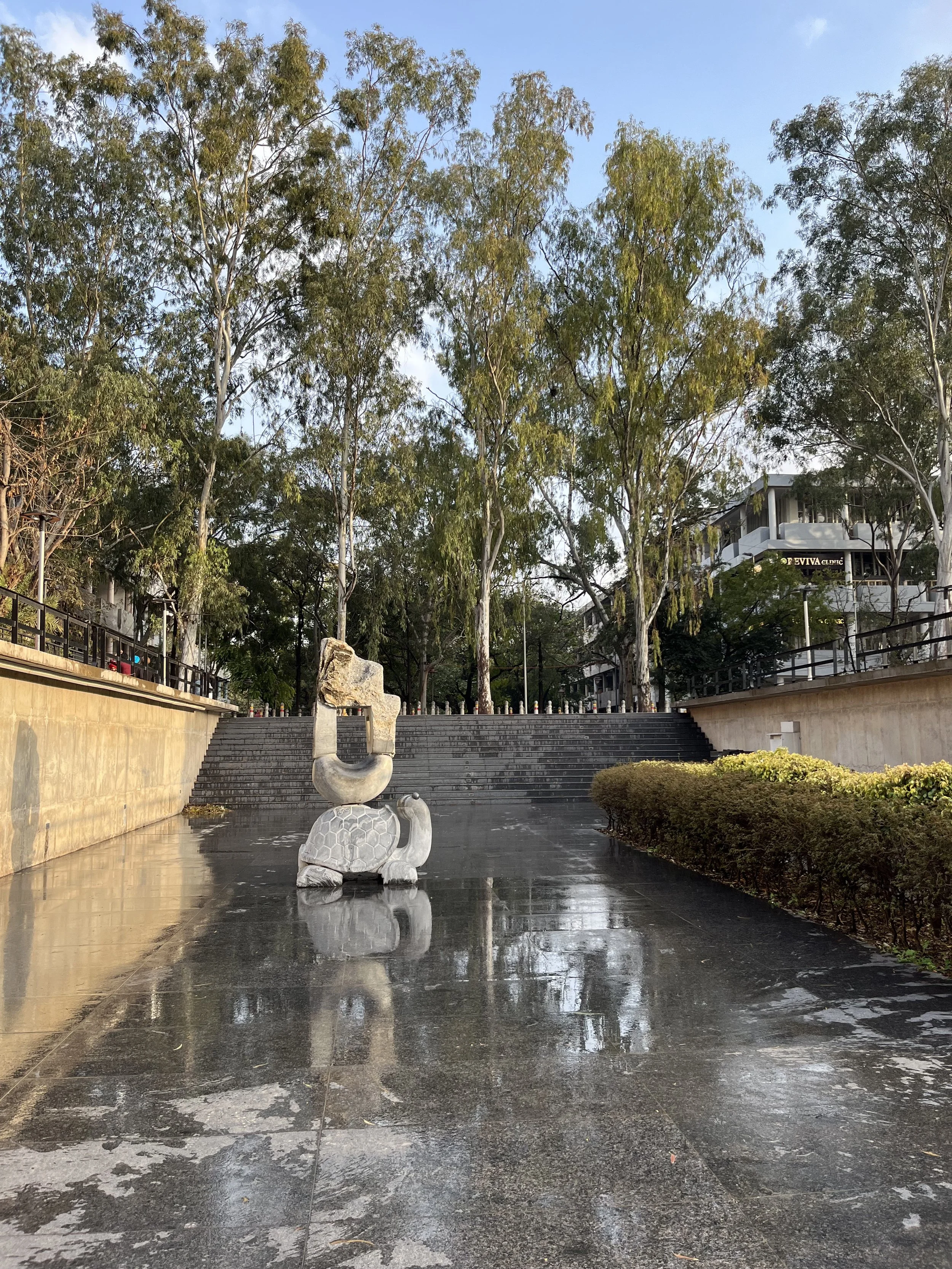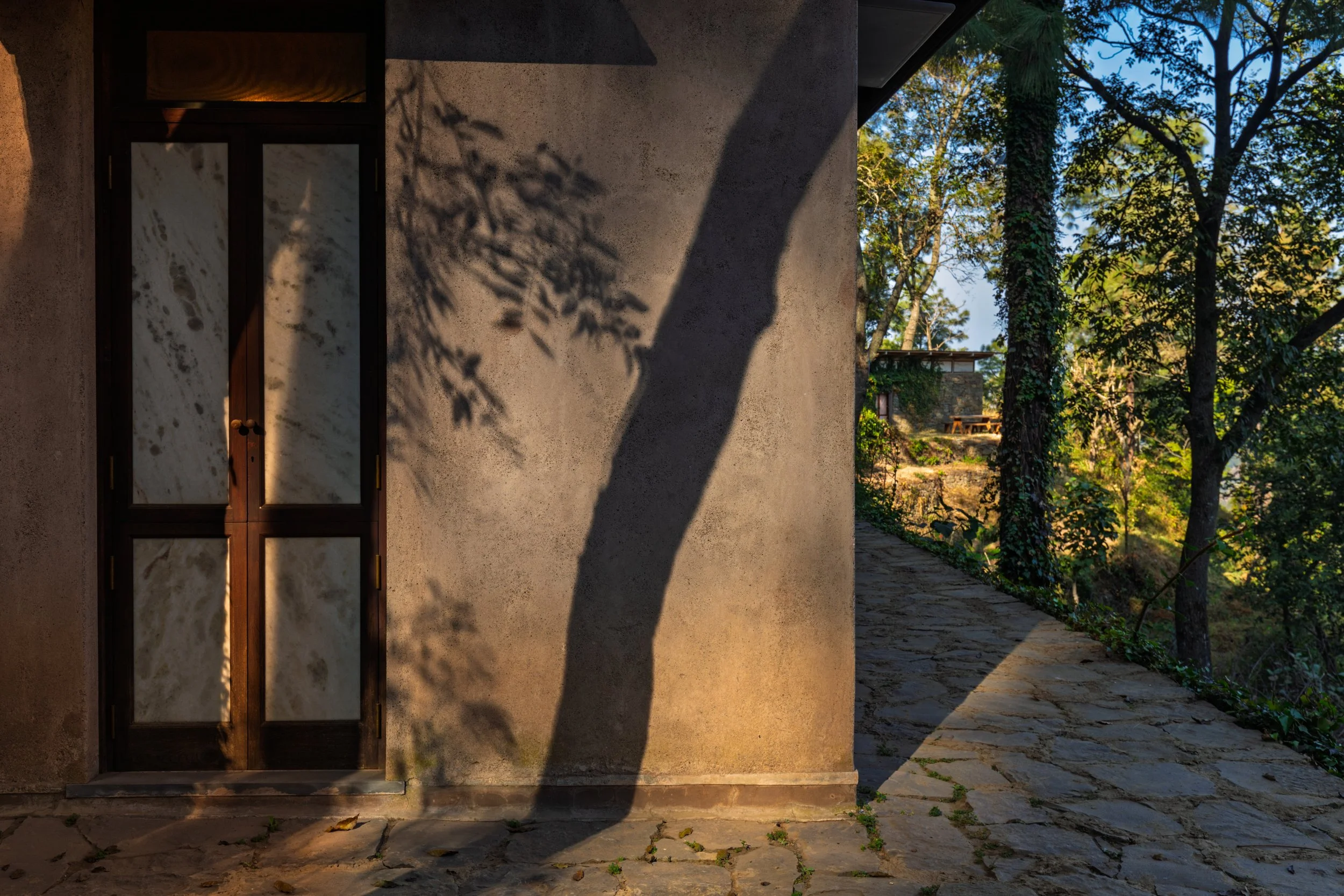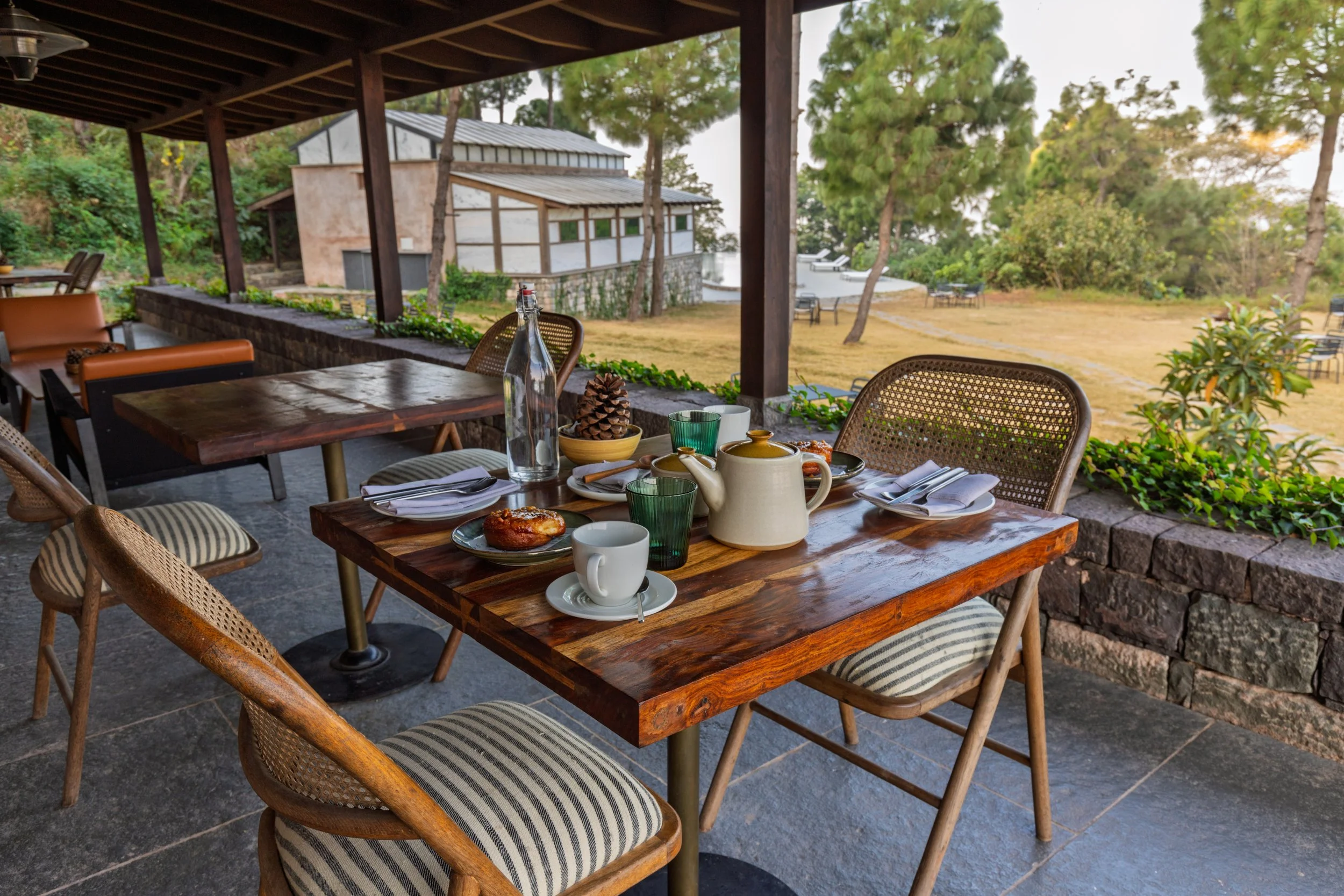Chandigarh – Le Corbusier’s Modernist Dream in the Punjab
Times columnist, Iain Macwhirter, was no enthusiast for brutalist architecture, but Le Corbusier's masterpiece city of Chandigarh in North West India took his breath away.
Nothing quite prepares you for Chandigarh, Le Corbusier’s famous brutalist city built in the Punjab in the 1950s - certainly not a tour of old Delhi. Clinging to a rasping Tuk Tuk as it dodges cows, trucks, dogs and people, roughly in that order, is about as far from the windy spaces of modernism as it is possible to get.
But it is worth bathing in the fumes, horns and smells of India if only to remind yourself that you’re really there. It is also the only way to access the city’s world-famous spice market, on Khari Baoli, the largest in Asia, with 20,000 stalls.
Old Delhi Spice Market
After the Old Delhi dodgems, our tireless guide-wallah, Ian Macready of Architourian, took us to view the kind of architecture Le Corbusier and his patron Nehru, were reacting against: the imperial boulevards of New Delhi with its “ceremonial axis”, the vast President’s Palace, the Rashtrapati Bhawan.
Rashtrapati Bhawan - the former Viceroy’s Palace
Laid out like a tropical Washington DC, New Delhi was designed by the British architect Sir Edwin Lutyens from 1911 as the supreme civic achievement of the British Empire - the jewel in the Jewel in the Crown. The India Gate, a triumphal arch, bears the names of the 75,000 Indians who died in The Great War.
Lutyens’ India Gate
Lutyens was a classical architect but he added Mughal arches and Buddhist domes to the palace, which makes it all look a little like an imperial theme park. Which in a sense is what New Delhi became, a collection of monuments to the past. When India secured its independence in 1947, the new Prime Minister, Jawaharlal Nehru, wanted a city that looked to the future rather than back to the Raj. Hence the idea of Chandigarh, the new capital of the Punjab.
The view of the Assembly Building
Chandi is the Hindu goddess of power and garh means fortress. Chandigarh embodies a lot of both. The Capitol Complex, incorporating the Legislative Assembly, the High Court and the Secretariat, is vast and forbidding at first. Power architecture designed to induce awe, if not shock. It is hard to gauge the sheer scale of Le Corbusier’s structures from photographs. They can seem both beautiful and disturbing at the same time.
The Secretariat
Le Corbusier wasn’t Nehru’s first choice of architect for Chandigarh. The project had been under the guidance of city planner Albert Mayer and the Polish architect, Maciej Nowicki, who died in a plane crash in 1950. The British architects, Jane Drew and Maxwell Fry, already a part of the project, insisted that the only one who could replace Nowicki and Meyer was the Swiss-French master of “breton brut”, Charles-Édouard Jeanneret-Gris, also known as Le Corbusier.
Le Corbusier with Nehru
He was no longer the enfant terrible of modernism, being in his 60s, but Corbusier could hardly resist the chance to build an entire city along his exacting philosophy of decision. He never actually lived in Chandigarh, residing for most of the year in his Paris apartment. The work of translating Le Corbusier’s often abstract designs into concrete reality was left to Drew, Fry, his cousin and one time studio partner, Pierre Jeanneret and a team of Indian architects and engineers. They weren’t always entirely successful.
Housing by Jane Drew
If there are echoes of a hundred British shopping centres in some of the buildings, that is because a generation of post-war architects and planners were influenced by Le Corbusier - even though he never designed anything bigger than a couple of private houses in the UK.
Carrying Concrete in the Capitol Complex
The concrete for Chandigarh was brought on the heads of hundreds of Indian women. The men did the actual construction of this futurist city hanging on scaffolding made of bamboo held together with hemp rope. It was certainly labour intensive. Jane Drew noted that it was cheaper to hire 700 men to dig a dyke than hire a digger. The peasants and itinerant labourers, many gypsies, must have thought they had been visited by an alien species. In a way they had.
The High Court at the Capitol Complex
Critics objected that there was never going to be enough water to build a city of this size let alone supply a growing population. Corbusier had a solution to that: he built a vast artificial lake complete with boat houses and restaurants. Capability isn’t always brown.
Sukhna Lake
Le Corbusier included an eighty-foot version of his favourite ‘open hand’ motif. It is supposed to twist gently in the wind, above this open air debating chamber, presumably in the vain hope of getting the politicians to rise above petty concerns.
The Open Hand Monument
Amid the austere concrete grey, Corbusier included the odd splash of vivid colour. He made the enamel door to the Palace of Assembly depicting, beneath a tree of life, the architectural team portrayed as animals. Corb is the crow. Maxwell Fry is suckling on the teat of Jane Drew in the form of a goat. Fry was not entirely happy with this image. Indeed, he was rather sceptical of the entire project.
The Hand Painted Door of the Assembly Building
The Tower of Shadows isn’t an uncompleted construction site but a structure intended to demonstrate Corbusier’s ideas of how to manage the heat of India passively using angles and natural air conditioning. Temperatures here can rise to 50 degrees.
The Tower of Shadows
Indian architects already had, for centuries, worked out their own ideas about managing the climate in the palatial “Havelis” or wind houses. And it has to be said that not everyone appreciated Le Corbusier’s imposition of what many believed to be western ideas of civic planning and design.
Palace of Winds at Jaipur
Some Indian critics regard Chandigarh, with its grid-iron layout, as another Western imposition, indeed as cultural imperialism in a modernist guise. Social stratification was built into Corbusier’s grand design. The houses are all graded, one to six, relating to the earnings of the citizens. This is an upper grade 5 house, designed for senior civil servants.
Pierre Jeanneret’s Home, where Le Corbusier would stay on his visits
Charles Correa, one of India’s most famous architects, while broadly sympathetic, objected also to Chandigarh use of raw concrete and rigid geometrical forms which did not align with Indian traditions. But one of the very few women who worked with Le Corbusier, Jane Drew, thought on the contrary that he had created a city “unlike any other, where modernist ideals meet Indian needs”.
The Map of the City in the Commercial Centre
Make no mistake: Indian architects and cultural historians are immensely proud of Chandigarh - and rightly so. It has stood the test of time and become, arguably, the greatest modernist city on the planet. Nowhere else in the world can you see Le Corbusier’s eccentric vision become reality. Just to experience this remarkable city is a privilege,
This is because Le Corbusier, who died sixty years ago this year, never saw Chandigarh as it was intended. The concrete modernism was to be softened by thousands of trees. Weeping Figs, Red Frangipani, Norfolk Pine, Golden Shower Tree, Banyan, Cyprus and a dozen other species were planted to provide shade and colour at every season of the year. These trees have only now matured making Le Corbusier’s Chandigarh one of the greenest cities in India.
The trees in the Commercial Centre
The side view of the Assembly Palace
In India, as in Europe, Corb has come in and out of fashion repeatedly over the years, not least because of his alleged flirtation with Mussolini and the far right. However, Chandigarh is very much back on the map following it becoming a UNESCO World Heritage site in 2016. It is regarded as a flawed masterpiece, a unique example of Tropical Modernism. It doesn’t disappoint.
School of Art
What did I think of it, when all is said and done? Well, brutalism has never been my thing, but I have to say that Chandigarh largely won me over. It is audaciously futuristic, even though it is seventy years old. If Mars is ever colonised by Elon Musk, it might well look like this.
A villa at the Amaya
However, after all that beton brut we were ready to take to the hills. The Amaya resort in the foothills of the Himalayas, near the hill station of Kasauli, is a kind of supremely upmarket version of Center Parcs, with rustic cabins in the woods.
Dining on the veranda
But this is no holiday camp. The fittings are very fine and gourmet Indian food is served in vast quantities, mostly sourced from Amaya’s own kitchen gardens and served on a veranda that looks over an elegant swimming pool to the Shivalik hills. The aesthetic couldn’t be more different to Corbusier’s. No monumental modernism here. No bustling city streets either and no tuk tuks. This is a little like Scotland, I thought to myself - and that’s no bad thing. No wonder the Victorians loved these hills.


